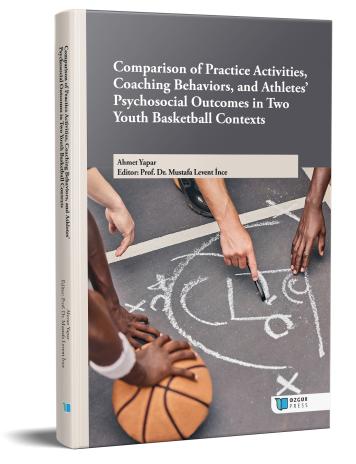
Comparison of Practice Activities, Coaching Behaviors, and Athletes’ Psychosocial Outcomes in Two Youth Basketball Contexts
İndir
Özet
The purposes of the study were to conduct systematic analysis of youth basketball practice activities, coaching behaviors, and youth basketball players’ youth experiences, sources of enjoyment and burnout in sport. Participants of this study were composed of four basketball school coaches, four club team coaches, and 390 youth male basketball players aged 12 to 14 years old from Ankara. The eight coach were videotaped three times during practice and totally 24 practice video were recorded. Videotaped practice activities were coded as training form and playing form activities and coaching behaviors were coded by using the Arizona State University Observation Instrument (ASUOI). Descriptive statistical analysis was used for observational data. Meantime with video recording, 390 youth male basketball players from several basketball school and club’s youth basketball teams completed the Youth Experiences Survey for Sport (YES-S), Sources of Enjoyment in Youth Sport Questionnaire (SEYSQ), and Athlete Burnout Questionnaire (ABQ). MANOVA was used for statistical comparison of basketball school and club team players’ group comparison. After then, stepwise multiple regression analysis was used to investigate the role of enjoyment and burnout on youth basketball players positive and negative youth development experiences. Systematic observation results indicated that observed practice activities displayed similar patterns in both basketball school and club’s youth basketball practices and training form of activities were found much more higher than playing form activities. Like practice activities, coaches exhibit similar coaching behaviors in both basketball contexts. MANOVA results showed that there were no significant differences between basketball school and club team players’ YES-S, SEYSQ, and ABQ scores (p<.05). According to stepwise multiple regression results, while some of SEYSQ subscales explained the positive development experiences, the ABQ and other SEYSQ explained negative developmental experiences. Overall findings of the study indicated that youth basketball activities are composed of much more training form practice activities than playing form activities. Coaching behaviors in each context were observed as similar and most observed coaching behaviors were instructional behaviors. Because youth basketball players exposure was similar regarding practice activities and coaching behaviors during practices, they have similar youth development experiences, enjoyment, and burnout levels.

